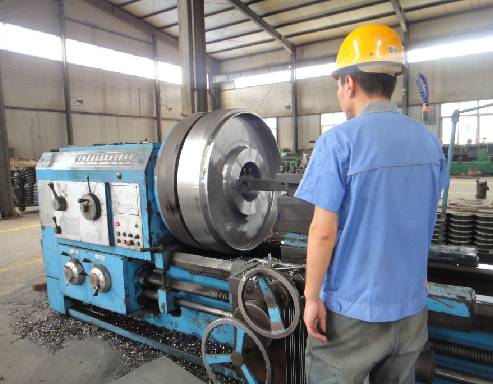 Afrikaans
Afrikaans  Albanian
Albanian  Amharic
Amharic  Arabic
Arabic  Armenian
Armenian  Azerbaijani
Azerbaijani  Basque
Basque  Belarusian
Belarusian  Bengali
Bengali  Bosnian
Bosnian  Bulgarian
Bulgarian  Catalan
Catalan  Cebuano
Cebuano  Corsican
Corsican  Croatian
Croatian  Czech
Czech  Danish
Danish  Dutch
Dutch  English
English  Esperanto
Esperanto  Estonian
Estonian  Finnish
Finnish  French
French  Frisian
Frisian  Galician
Galician  Georgian
Georgian  German
German  Greek
Greek  Gujarati
Gujarati  Haitian Creole
Haitian Creole  hausa
hausa  hawaiian
hawaiian  Hebrew
Hebrew  Hindi
Hindi  Miao
Miao  Hungarian
Hungarian  Icelandic
Icelandic  igbo
igbo  Indonesian
Indonesian  irish
irish  Italian
Italian  Japanese
Japanese  Javanese
Javanese  Kannada
Kannada  kazakh
kazakh  Khmer
Khmer  Rwandese
Rwandese  Korean
Korean  Kurdish
Kurdish  Kyrgyz
Kyrgyz  Lao
Lao  Latin
Latin  Latvian
Latvian  Lithuanian
Lithuanian  Luxembourgish
Luxembourgish  Macedonian
Macedonian  Malgashi
Malgashi  Malay
Malay  Malayalam
Malayalam  Maltese
Maltese  Maori
Maori  Marathi
Marathi  Mongolian
Mongolian  Myanmar
Myanmar  Nepali
Nepali  Norwegian
Norwegian  Norwegian
Norwegian  Occitan
Occitan  Pashto
Pashto  Persian
Persian  Polish
Polish  Portuguese
Portuguese  Punjabi
Punjabi  Romanian
Romanian  Russian
Russian  Samoan
Samoan  Scottish Gaelic
Scottish Gaelic  Serbian
Serbian  Sesotho
Sesotho  Shona
Shona  Sindhi
Sindhi  Sinhala
Sinhala  Slovak
Slovak  Slovenian
Slovenian  Somali
Somali  Spanish
Spanish  Sundanese
Sundanese  Swahili
Swahili  Swedish
Swedish  Tagalog
Tagalog  Tajik
Tajik  Tamil
Tamil  Tatar
Tatar  Telugu
Telugu  Thai
Thai  Turkish
Turkish  Turkmen
Turkmen  Ukrainian
Ukrainian  Urdu
Urdu  Uighur
Uighur  Uzbek
Uzbek  Vietnamese
Vietnamese  Welsh
Welsh  Bantu
Bantu  Yiddish
Yiddish  Yoruba
Yoruba  Zulu
Zulu Types and Uses of Conveyor Belt Rollers for Efficient Material Handling
Understanding Conveyor Belt Roller Types A Comprehensive Overview
Conveyor systems are integral to modern industrial operations, facilitating the efficient movement of materials in manufacturing facilities, warehouses, and distribution centers. At the heart of these systems is the conveyor belt roller, which plays a crucial role in supporting the belt, allowing it to transport goods without friction or excessive wear. Various types of conveyor belt rollers are available, and each serves a distinct purpose based on the material being moved, the environmental conditions, and the specific application. This article explores the different types of conveyor belt rollers and their applications.
1. Idler Rollers
Idler rollers are perhaps the most common type of conveyor belt rollers. These rollers do not drive the belt but support it, helping maintain tension and alignment. Idler rollers are typically found in the load-carrying sections of a conveyor, positioned at regular intervals along the length of the belt. They can be constructed of various materials, including steel, plastic, or aluminum, to suit different loads and environmental conditions.
Roller Types Within Idler Rollers - Flat Rollers The most basic design, flat rollers provide a surface for the conveyor belt to run on. They are ideal for applications where the belt must maintain a constant elevation. - Impact Rollers These are specially designed to absorb the impacts of materials loading onto the conveyor. They often feature a rubber or polymer outer layer to minimize wear. - Training Rollers Also known as tracking rollers, these devices help align the belt on the conveyor, ensuring it runs straight and reducing the risk of edge wear.
2. Drive Rollers
Drive rollers are another essential component of conveyor systems. Unlike idler rollers, these rollers are responsible for providing motion to the conveyor belt. They are usually located at one end of the conveyor and are connected to a motor that powers the entire system.
Key Characteristics - Motorized Drive rollers can come with built-in motors, or they may be driven by linked chains or belts from separate motors. - Variability in Design They can be smooth or crowned (slightly angled), which helps in tracking the belt. - Sizes and Capacities Different drive rollers can handle various load capacities and speeds, allowing them to be used in a range of applications.
3. Return Rollers
Return rollers support the underside of the conveyor belt as it returns to the loading area
. Their design often mimics that of idler rollers but may have added features to prevent belt sagging and ensure smooth travel back to the starting point.conveyor belt roller types

Importance of Return Rollers - Support and Alignment They keep the belt supported during its return journey, preventing it from sagging or twisting. - Durability Return rollers are typically constructed from durable materials to withstand the wear and tear of returning materials.
4. Specialty Rollers
In addition to standard roller types, various specialty rollers are designed for specific tasks or environments
- Spiral Rollers Used in spiral conveyors, these rollers allow the belt to navigate curves while maintaining proper tension and alignment. - Heavy-Duty Rollers Designed for high-load applications, these rollers have robust construction to handle the stress of moving heavy materials. - Corrosion-Resistant Rollers Ideal for environments exposed to moisture or chemicals, these rollers are made from materials resistant to rust and corrosion.
5. Choosing the Right Roller
Selecting the appropriate type of conveyor belt roller hinges on several factors, including
- Load Type Consider the materials being transported. Heavy items may require heavy-duty rollers or impact rollers. - Environmental Conditions If your conveyor operates in a wet or chemically aggressive environment, corrosion-resistant rollers are essential. - Speed and Tension The required conveyor speed and tension levels will influence the type of drive and idler rollers needed.
Conclusion
Understanding the various types of conveyor belt rollers is crucial for optimizing conveyor systems. Each type of roller serves a unique purpose and is designed to enhance the efficiency and longevity of conveyor operations. By selecting the right rollers according to the specific application, businesses can improve their material handling processes, reduce downtime, and enhance productivity. As industries continue to evolve, so too will the technology and design of conveyor belt rollers, ensuring they remain a vital component in the logistics and manufacturing landscape.
-
Revolutionizing Conveyor Reliability with Advanced Rubber Lagging PulleysNewsJul.22,2025
-
Powering Precision and Durability with Expert Manufacturers of Conveyor ComponentsNewsJul.22,2025
-
Optimizing Conveyor Systems with Advanced Conveyor AccessoriesNewsJul.22,2025
-
Maximize Conveyor Efficiency with Quality Conveyor Idler PulleysNewsJul.22,2025
-
Future-Proof Your Conveyor System with High-Performance Polyurethane RollerNewsJul.22,2025
-
Driving Efficiency Forward with Quality Idlers and RollersNewsJul.22,2025





























